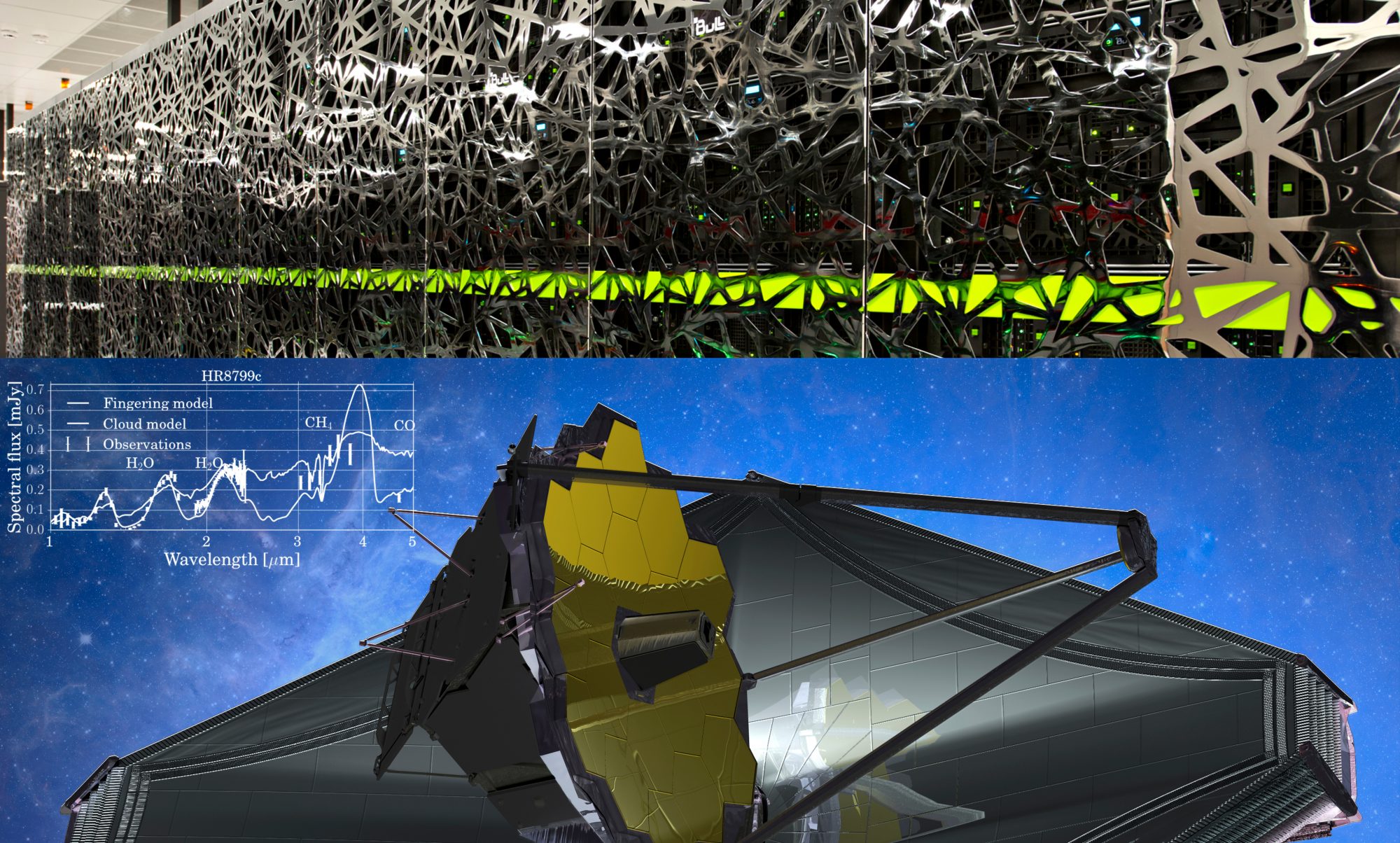Fingering convection is a known phenomenon happening in Earth Oceans, that has been introduced in oceanography by Stern (1960) and in stellar astrophysics in the 70’s by Ulrich (1972). Recently it has been proposed to occur in the atmosphere of brown darfs and exoplanets (Tremblin et al. 2015 and Tremblin et al. 2016).
This process arises when a stably stratified fluid is subject to a gradient of mean molecular weight. In an ideal fluid, the pressure of the fluid \( P\) is related to the density \( \rho\), temperature \( T\), and mean molecular weight \( \mu\) by \(P= \rho k_b T/\mu\). When the pressure and temperature adjustments of a fluid parcel \( p\) in its environment \(e\) are fast (rapid heat diffusion in a stably stratified fluid), \( P_p = P_e\) , and \( T_p = T_e\), it implies that the ratio of the density to the mean molecular weight is constant: \( \rho_p/\mu_p = \rho_e/\mu_e\). Therefore when a fluid parcel from below is moving up in a increasing mean-molecular weight profile and when the chemical diffusion is slow, the parcel verifies \( \mu_p < \mu_e\), and \( \rho_p < \rho_e\) meaning that the parcel is lighter than the environment and will continue to move up: the process is unstable. If the process is efficient to transport energy with a moderate heat diffusion leading to \( T_p > T_e\), the parcel verifies \( \rho_p / \rho_e < T_e/ T_p < 1\) and the process is still unstable since \( \rho_p < \rho_e\). In the non-linear phase of the instability, the convective motions can generate large-scale circulation patterns and also act as a small-scale mixing process in the fluid (the small-cale fingers) which can be characterized by a thermal- and compositional- convective (turbulent) transport.
In Oceans, heat and salt concentrations exist with different gradients and diffuse at differing rates, causing the formations of small-scale “fingers” and also large-scale circulation patterns such as the thermohaline circulation. In Astrophysics, it can arise in chemically peculiar stars that can have heavy-element accumulation in their atmosphere, typically of the order of 10-100 for Ap stars, but can even reach factors up to 10\(^4\) and 10\(^5\) for more massive stars such as Bp stars. In the atmosphere of brown dwarfs and exoplanets, the instability can be triggered by chemical transitions (see this post):
- CH\(_4\)+H\(_2\)O \(\leftrightarrow\) CO+3H\(_2\)
- 2NH\(_3\) \(\leftrightarrow\) N\(_2\)+3H\(_2\)
The methane+water mixture or the ammonia mixture will form in the upper layers of the stably-stratified atmosphere, at cold temperatures. The mean molecular weight of these mixtures is, however, higher than the one of the carbon monoxide+di-hydrogen or di-nitrogen+di-hydrogen mixtures in the deep atmosphere (less molecules on the left hand side on the chemical reactions than on the right hand side), hence triggering the fingering instability.
